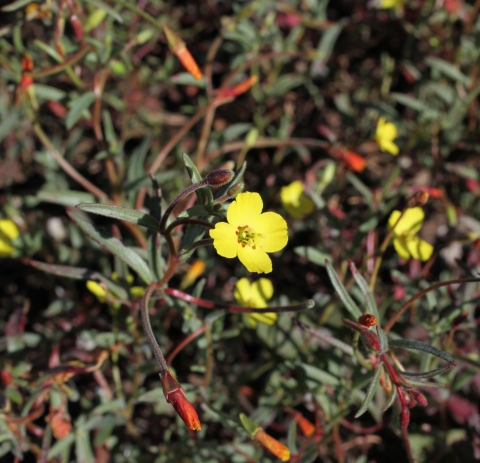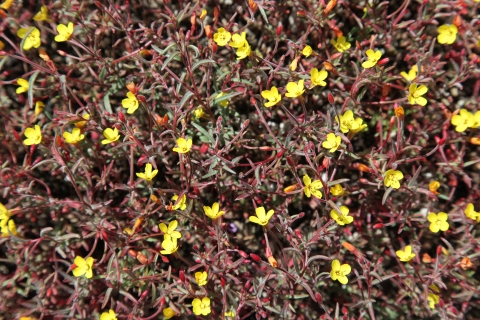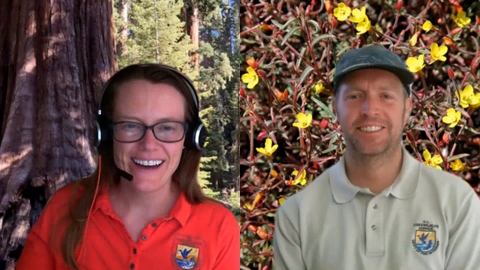By Ashley McConnell
Thanks to decades of conservation efforts, the San Benito evening primrose, a small flowering plant native to California, is being removed from the federal list of endangered and threatened wildlife and plants due to recovery. The U.S. Fish and Wildlife Service listed the plant as threatened under the Endangered Species Act in 1985 due to ongoing threats of motorized recreation activities and commercial mining operations.
At the time of listing, the species was documented in only nine locations in a small area of San Benito County, California. Annual surveys for the species have confirmed that the plant now resides in more than 100 areas across multiple watersheds in portions of San Benito, Monterey and Fresno counties.
“The Endangered Species Act is a catalyst that brings resources to the table to assess threats and support recovery,” said Cat Darst, assistant field supervisor for the U.S. Fish and Wildlife Service in California. “When we are able to say a species is no longer threatened in the wild, we know the Endangered Species Act is working.”
The San Benito evening primrose is a small, annual plant with bright yellow flowers once thought to be in danger of extinction. The U.S. Fish and Wildlife Service is removing the plant from the Endangered Species Act due to recovery. Credit: Ryan O’Dell/BLM
Understanding the plant’s ecology and habitat has improved due to the diligent efforts of the Bureau of Land Management to survey, study and conserve habitat for the San Benito evening primrose over the last three decades.
"Recovery of endangered species is challenging, but essential to the preservation of biodiversity,” said Ryan O’Dell, natural resource specialist, Central Coast Field Office for the Bureau of Land Management. “It requires careful balance of land use to protect habitat, a thorough scientific understanding of the ecology of the species, and diligent effort to fulfill the recovery actions. The Bureau of Land Management to survey is proud of its lead role in the recovery of San Benito evening primrose and the conservation of California floristic diversity for future generations."
“Plants are indicators of environmental conditions in an area, and contribute to the greater ecosystem and food web,” said Service botanist Todd Lemein. “The San Benito evening primrose occupies a goldilocks niche, surviving best in areas with nutrient poor soils and a specific amount of disturbance. As a result, the San Benito evening primrose contributes to a primary trophic level in an environment where many plants can’t survive.”
The primary threats to the species at the time of listing no longer threaten the plant’s survival in the wild. The threat of motorized vehicle recreation was reduced partially due to a 2008 finding from the Environmental Protection Agency that found motorized vehicle use exposed riders to a higher than acceptable risk of naturally-occurring asbestos at the Bureau of Land Management’s Clear Creek Management Area in San Benito County. This finding resulted in a temporary prohibition of vehicle use where San Benito evening primrose was known to occur. In 2014, formal restrictions on motorized vehicle use were included in the BLM’s Resource Management Plan to protect human health.
A post-delisting monitoring plan has been developed to monitor the plant’s status over the next five years to verify that the species remains secure from the risk of extinction.
Working with others is essential to protecting ecosystems that benefit society as a whole. The Service uses the best available science to make the Endangered Species Act determinations and regularly engages conservation partners, the public, landowners, government agencies and other stakeholders in its ongoing effort to identify innovative strategies for conserving and recovering protected wildlife, plants and their habitats.
Click here to watch a videocast with bublic affairs specialist Ashley McConnell and botanist Todd Lemein as they talk about the role plants like San Benito evening primrose play in the broader ecosystem and the importance of the Endangered Species Act as a mobilizer to support endangered species recovery.





